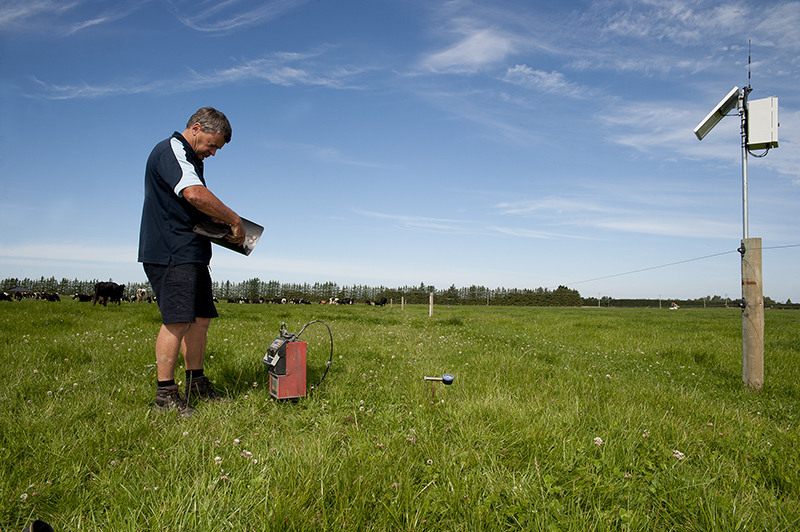Aqualinc research implemented in Marlborough Environment Plan
Irrigation monitoring. Image: Aqualinc.
Almost eight years of research by Dr John Bright and his colleagues at Aqualinc Research and the Marlborough District Council has been instrumental in creating the water management sections of the proposed Marlborough Environment Plan decision document, which was released during a special ceremony at Omaka Marae in late February.
Dr Bright says the plan incorporates key results from research on water allocation management conducted by Aqualinc and Marlborough District Council from 2008 to 2016, which he says also included considerable engagement with stakeholders.
“Our main goal has been to enable sustainable use of Marlborough’s water resources, which means creating a framework for water use for the many industries that rely on it, while still maintaining or indeed enhancing the quality of that resource.
“In Marlborough, agriculture, horticulture, and viticulture all need reliable supplies of freshwater for irrigation and for the processing of crops. However, the economic wellbeing of the area not only depends on these industries, but also domestic and international tourists who are attracted by the region’s natural beauty. It is a balancing act that required a lot of research to offer the best-case water management practices to service these interests and maintain the environment,” says Dr Bright.
The plan brings three of the region's major management plans, the Marlborough Regional Policy Statement, the Marlborough Sounds Resource Management Plan, and the Wairau-Awatere Resource Management Plan, into a single document and sets out the rules around appropriate activities in Marlborough's urban, rural, and coastal environments.
Mayor John Leggett said the plan's release is a milestone for Marlborough.
“This is the first fully integrated resource management plan produced by a council to emerge intact. It’s a first for New Zealand and an achievement that shows our region as a leader in environmental planning,” says Mayor Leggett.
“In a single plan we have defined how our natural and physical resources – the air, fresh water and coastal waters, the productive land, and the natural ecosystems – will be sustainably managed by the Council in partnership with iwi, the community, and central government. A single resource management plan will also make it easier for the community to navigate the RMA,” he said.
You can read the Proposed Marlborough Environment Plan decisions document on the Marlborough District Council’s website.
Copies of the decisions document can also be viewed at Council’s Blenheim and Picton offices, and at the Blenheim and Picton libraries.
Find out more about Aqualinc.
Date posted: 28 February 2020

